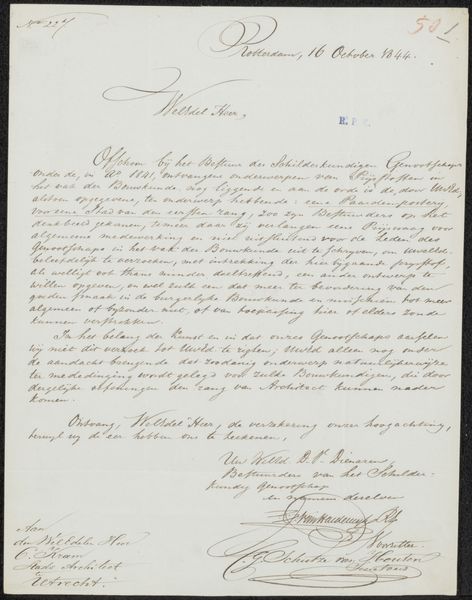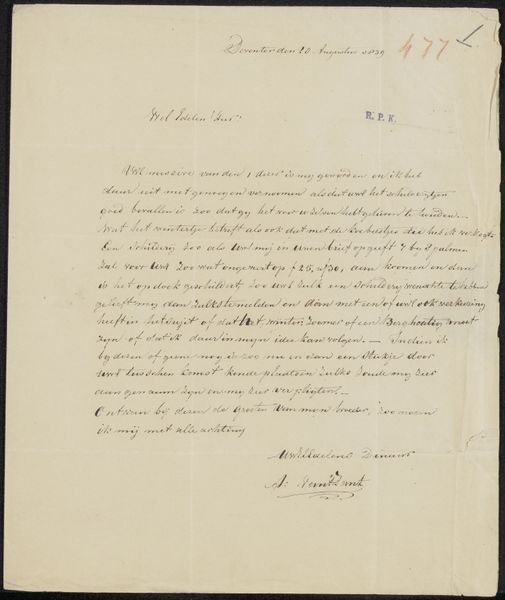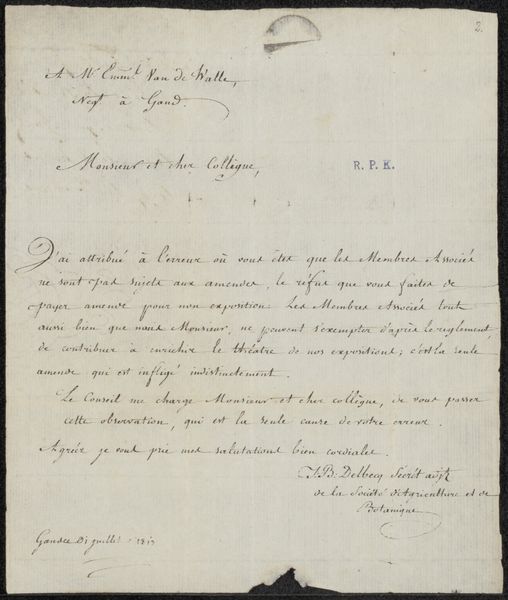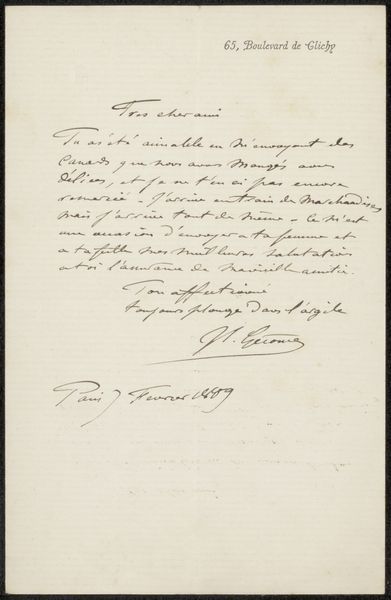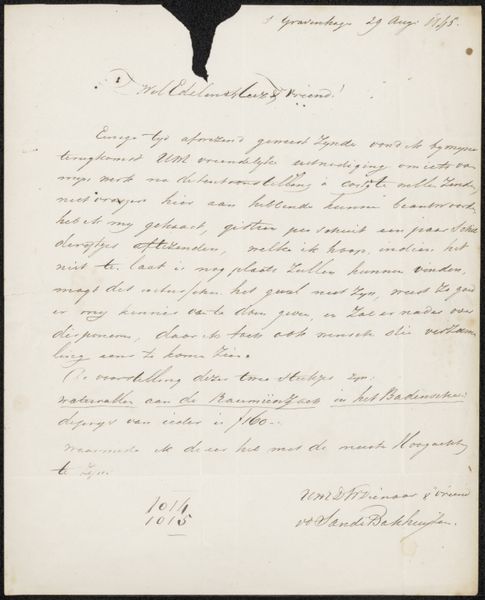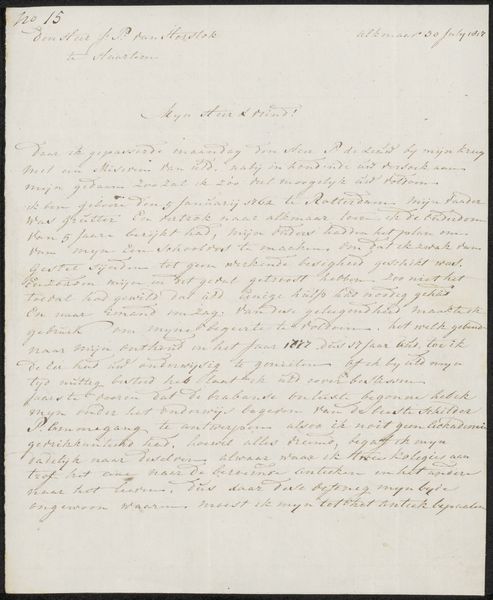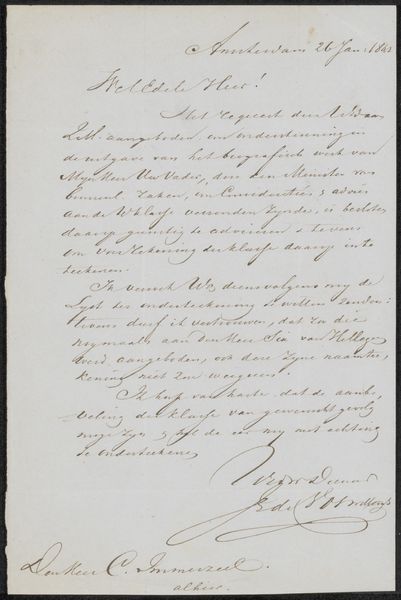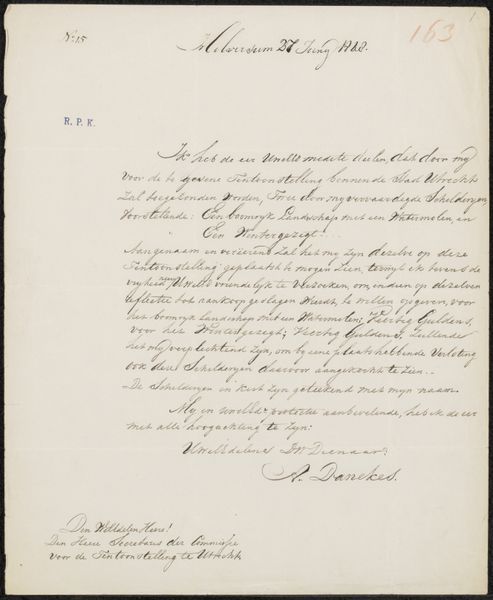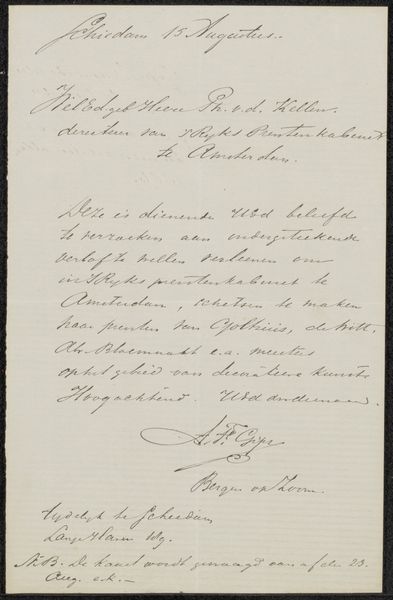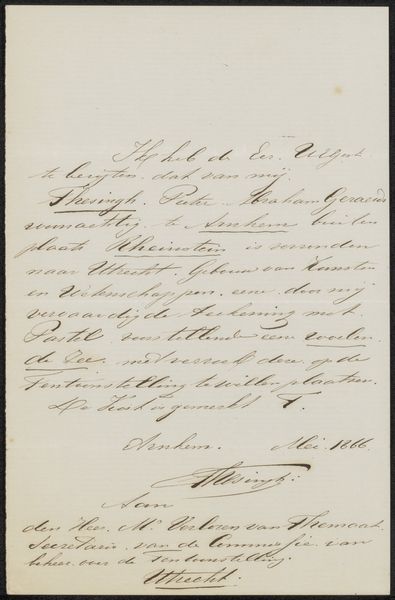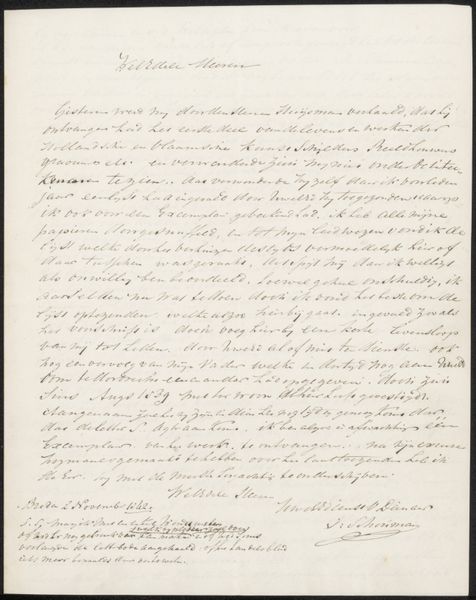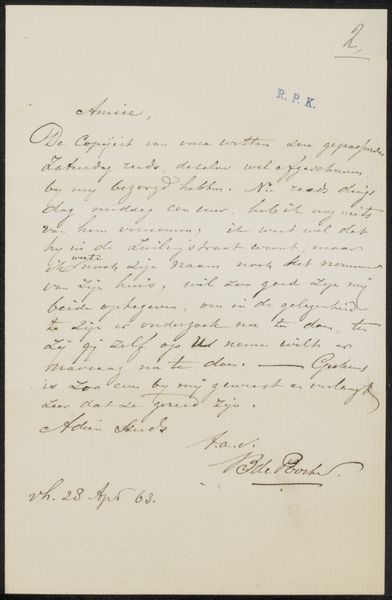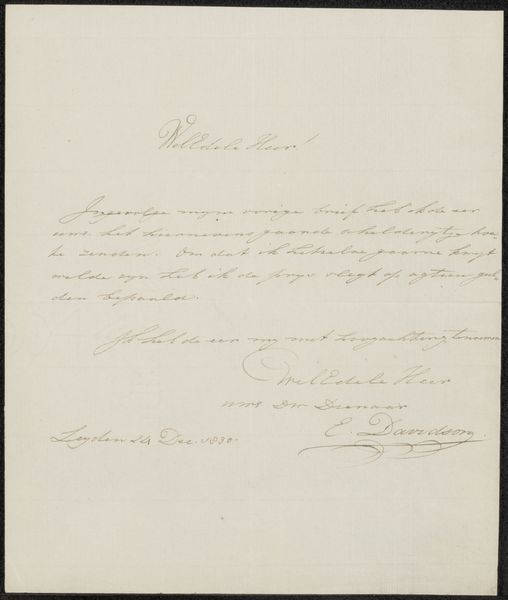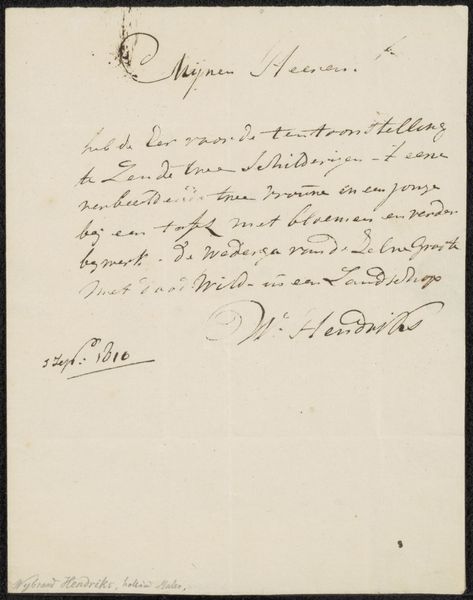
drawing, paper, ink
#
drawing
#
comic strip sketch
#
pen sketch
#
sketch book
#
hand drawn type
#
paper
#
personal sketchbook
#
ink
#
romanticism
#
pen-ink sketch
#
pen work
#
sketchbook drawing
#
storyboard and sketchbook work
#
sketchbook art
Copyright: Rijks Museum: Open Domain
Curator: This is "Brief aan anoniem," or "Letter to Anonymous," a drawing attributed to Cornelis Apostool, dating possibly to 1821. It’s held in the collection of the Rijksmuseum. Editor: There's a quiet formality to this. The handwritten text, the aging of the paper—it all feels very intimate, despite its age. I notice the elegance in the letter forms; see the curves of the “S” and how they almost dance on the page? Curator: Indeed. Apostool was Director of the Royal Picture Gallery at the time, a period in which we saw a centralization of artistic taste-making. His position undoubtedly influenced his social circle, and artworks like this give us insight into that circle of artists and patrons. It offers us an ephemeral peek at communication among artistic elites of the time. Editor: Yes, there is much to read here about hierarchy, class, and influence, but even without context I find the lines fascinating. The ink's varied density shows the pressure applied by the hand—some strokes confident and bold, others almost tentative. See how that contrasts with the regularity and spacing, suggestive of carefully learned technique and penmanship? Curator: Precisely. What strikes me is the potential power dynamics at play in what seems at face value, a friendly note. Who was the anonymous recipient and what was their social standing in relation to Apostool or the alluded "Monsieur E. Durand of Paris?” The content suggests a favor is being requested, or an introduction being brokered, potentially shaping artistic reputations or patronage. Editor: The slight slant of the writing lends a certain dynamism to the overall composition, like it’s captured in movement—a fleeting moment of communication. The letter is carefully constructed, despite any haste in its creation, offering balance to its composition with its various curves. Curator: For scholars, an artifact like this can unlock layers of information about artistic networks and the circulation of ideas. The original context of Romanticism gives further nuance. It invites us to delve into how art influenced social rituals and was bound in processes of creating both public perception and institutional taste. Editor: In the end, what really moves me is the contrast of the deliberate craft to the simple nature of writing a friendly letter, and pondering whether this work might, in the end, simply be about introducing an acquaintance and being polite.
Comments
No comments
Be the first to comment and join the conversation on the ultimate creative platform.
